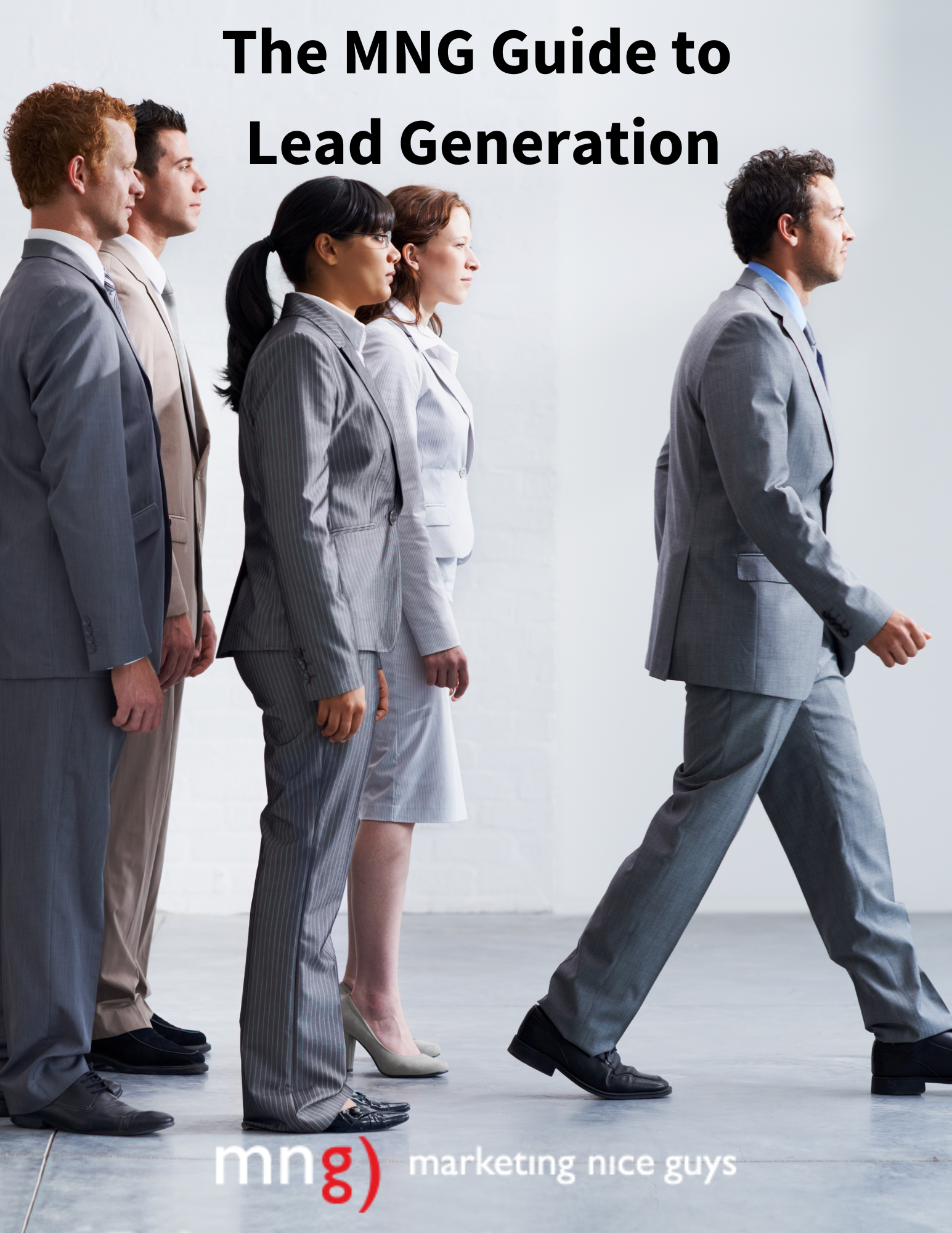Many organizations that had planned in-person events in 2020 have either canceled or switched over to virtual options in the past 9 months. In looking to 2021, virtual continues to look to be the option of choice in the near term in particular, albeit some organizations that have chosen to do a mix of in-persona and virtual. Marketing your virtual event can pose additional challenges, given there’s no lure of a destination, or the excitement of in-person networking to offer up.
In our recent webinar on Dec. 3, 2020, we covered 5 easy-to-implement ways to boost your marketing and registration for the era of livestreaming:
- Start Early & Reach Out to Speakers, Influencers, & Sponsors
The big mistake we see a lot of organizations make is that they start their event marketing late. And the lack of urgency is particularly present when it comes to virtual events, with the thinking being that, because registrants don’t have to travel, they can always sign up last-minute! But such an approach defies the basics of marketing and can lead to a scramble at the end to try to meet attendance goals.
We always recommend starting early for that reason. Here are a few things you can do:
- Develop your microsite. If it’s a new event, you can develop your microsite while you’re still working out the details of the event. You really just need the name and a logo and you’re ready to go. (On the name, make sure it reflects something people will remember and also reflects the way attendees speak about the event topic.) Second, make sure to set up tracking and ad pixels you’ll need to do paid marketing, as well as build the core landing pages that will help you drive traffic from a SEO perspective. If you’re ready for registration, definitely open it up. If not, build a simple form on the page to collect e-mail addresses with the intention of providing people updates when registration goes live or supplying other conference updates. If it’s an existing event that you’re moving online, make sure if you develop new pages to keep the SEO equity you built up from the previous event and transfer it to this one. The best way is to keep the URLs static. If you end up changing the URLs, do the necessary 301 redirects that will help you transfer equity from old pages to new ones.
- Reach out to the speakers. It’s likely that you chose speakers because of their prominence in the industry, or perhaps because they are indeed celebrities. As such, speakers have a built-in following in social and other media. How do you take advantage of that? If it’s a celebrity, often there are limits to what they would be willing to do contractually. But for the rest of the speakers, you can certainly ask them to help spread the word. First, provide them pre-made templates/images that they can use in social to tell others they are speaking at your event. Include your conference logo and some basic directions about post frequency and cadence to the speaker himself. Most speakers would be more than willing to post an image if you develop the collateral. One other thing you can certainly do with speakers is to provide them the ability to give, say, a 5 to 10 percent discount code for their friends to use to register. It’s a way to thank the speakers for sending this on and passing the word. It also increases their sway and influence as people recognize their ability to get deals for others.
- Reach out to influencers. No, we’re not talking about Kim Kardashian. (That said, if you can get and afford Kim K., by all means you should!) We’re talking about your everyday industry influencers – the thought leaders that help sway opinion. Even if such influencers aren’t speaking at your event, it doesn’t mean you can’t involve them. Are they already registered? Provide them similar collateral to speakers (but perhaps instead of “I’m speaking” you could give them something that says: “I’m attending”). Like your speakers, reach out to them to provide a unique discount code so you can track who signs up based on that influencer’s messaging. One other technique is to comp an influencer to your event. In exchange, you can get them to post about your event as well in social. Make sure to a. Choose industry influencers with large and active followings and; b. Be explicit in your expectations for posting for the influencer, including a schedule and cadence that you both agree to upfront.
- Reach out to sponsors. Similar to speakers and influencers, your sponsors sometimes have large followings in social. As a marketer, it certainly behooves you to coordinate with the sponsorship sales team closely. That includes following up with sponsors to help them promote a panel they may be on, or a discussion or lunch keynote they are sponsoring. The great thing about sponsors is that they can invite their existing customers to attend, as well as others that are potentially considering them – and would consider your event.
2. Develop a Full-Funnel Content Approach
Many organizations develop content to promote their events or other products and services but most of the time, it’s focused on one part of the marketing funnel. To be most effective, we suggest starting this effort months out and planning for content in every part of the buyer journey. For simplicity’s sake, let’s break down the marketing funnel into 3 parts: a. Top-of-the-funnel awareness; b. Mid-funnel consideration and new-prospect acquisition, and; c. lower-funnel conversion.
For top-of-the-funnel awareness, a few vehicles work really well:
a. Past conference video (if you have it). Even if the previous conference was held in-person, your attendees will get the gist of the quality of content and it will help them associate that quality with your event. Just make sure to brand the videos with this year’s virtual conference logo and theme.
b. Quick videos/recordings of conferences speakers teeing up their presentations. How about asking your conference speakers to record a quick, 30-second-to-1-minute spot on the topic of their upcoming conference presentation. The goal of the recording is to get people excited about the speaker’s topic and generate interest in the conference itself.
c. Blogs on core topics. Blogs drive website traffic and, in this case, can be used to promote the conference theme and drive traffic to your microsite. We recommend original blogs that can be embedded solely in the conference site. Because it’s only up for a brief period, it typically won’t involve SEO. If you want to archive the content after the event has ended, you can simply redirect that content to the same published piece on the website afterwards. The other alternative is to publish the content on both the microsite and the conference site, but send the canonical tag (the tag pointing Google to the searchable version) to the main website. Either way, it’s good to promote the conference blogs in social to spread awareness of your event.
For mid-funnel consideration and acquisition, we suggest a few approaches here as well:
a. Topical e-books / downloadable whitepapers. One of your marketing goals for your event needs to be potential attendee acquisition – increasing the number of relevant individuals you can target email messages to, so they can stay update with the conference. We don’t recommend buying lists as they are notoriously unreliable and constitute spam that most marketing automation systems now don’t even allow. So how do you acquire individuals to your list? Provide them useful content for downloading and put that behind a quick registration form. What you put together is up to you but we encourage you to think about your audience challenges and write about them. Also, make sure your download form is clear in terms of the fact that by downloading the asset, they agree to be emailed to – and make sure to make it opt-in. For GDPR and CCPA purposes, you can certainly make it such that only opt-in users can download.
b. Video tours of the platform you’re using. Today, it’s relatively easy to create a quick narrated tour of the livestreaming platform you intend to use with a software such as OBS Studio or Camtasia. Such a video tour might even be available from the platform vendor but you probably want to customize it to your event. The tour accomplishes two things: First, it allows you to highlight the cool experiences that an attendee will experience. Second, if you rehearse it well, it allows you to telegraph the ease at which attendees can get around and the value they will get for their money. As they consider purchase, such a tour can play a key role in helping convince them to take the plunge.
For lower-funnel conversion, here are a few additional ideas:
a. Convince-your-boss-letter templates (emphasizing cost-effectiveness/no travel). Professional development funds are typically available for employees to attend conferences. But oftentimes there aren’t enough funds for the whole team. So, it’s important for employees to justify PD dollars whenever they try to use them. A convince-your-boss sample letter helps them easily articulate reasons to attend.
b. FAQs. Many organizations already do this, but it’s good to understand your audience such that you can anticipate questions without them asking. For virtual events, it’s critical because the last thing they want to do is have to call someone to get a simple answer. When drafting, make sure to focus on those dealbreaker-type questions that might come up. Your ability to help your audiences find that answer easily will help ease any doubts they might have.
c. Testimonials (if a new event, use general company testimonials). If you’re moving an offline event online, it’s still good to use testimonials from the previous years’ events assuming they convey the conference quality or solid presentation content. If it’s a completely new event, that’s OK too. You can use general testimonials about the organization too, or a general quote about the quality of the organization’s conferences and events. One thing: Definitely make sure to gather testimonials for next year as well.
3. Target Industry Publishers
One of the first things you can do when marketing your virtual event is to get on industry “best lists” that are put out by publishers. The best way to do this is to reach out to the publishers of those lists that already rank high in search for the key “best XYZ-industry conferences [year]” and just simply tell them the name of your event and provide the link and description. Not only does that enhance awareness for your event by showing up on a best list. It also provides critical inbound-link SEO for your event given the authority of the list that you appear on.
Secondly, we’ve found past success using various publishers’ chaperoned emails to both create wider awareness of your virtual event and also use it for acquisition to your own email list. With a chaperoned emails, you don’t see the actual list of individuals, but you can put downloadable content in front of the publishers’ audiences, where you can acquire them as your own. Alternatively, you can also simply link directly to your event, depending on the timing.
4. Create Urgency
We’re big fans of creating urgency to register any way we can. One way to do this is to create different rate structures (early-bird, advanced, and standard registration) and set deadline dates for each. The earlier someone registers, the lower the rate. As each deadline approaches, you can create that urgency to claim the discount. With virtual events, many conferences have stopped providing different rate structures for their events, given the fact that many can choose to register at the last minute and costs are generally lower to attend online. But we think that’s actually a mistake if you have the ability to market an event that’s further out. If you don’t have the ability to do different rate structures, you can also try a one-time only discount that has a particular end date.
One of the best things you can do with a limited-time discount or a rate deadline is to build in a simple countdown clock on your e-commerce checkout or on your marketing microsite for your virtual event. The clock reminds visitors they need to get the registration done to get the rate. It’s a simple thing that many conferences don’t do, but easy for your development team to build in.
5. Focus on Those Who Show Intent
The holy grail of most conference marketing efforts revolves around finding those who show a potential or an “intent” to register. There are a few ways you can narrow down the audience and target these “in-market” potential registrants specifically.
a. Paid search. One of the great opportunities presented by Google is the ability to get in front of people who are researching professional development opportunities or seeking conferences in their industry. You can tell this by the particular search term they use, especially when the search gets to be a branded term. For example, if someone is searching for: “legal industry conferences 2021,” they are probably still doing research on what’s out there and surveying the field. They might be certainly worth targeting in paid search from an awareness standpoint but may not yet be ready to pull the trigger. However, if they use a branded term such as “AILA (American Immigration Lawyers Association) Annual Conference 2021” or “AILA legal conference,” they might be worth targeting for conversion (if you’re AILA) because they’ve already done the research and know the brand. Those individuals tend to be lower in the purchase funnel. You might ask why not just let the organic result work in this case? You can certainly do that, but a good paid search ad including some of the urgency around a deadline / discount, or a great call to action, can ensure you capture those individuals first. Also, many competing conferences bid (intentionally or unintentionally) bid on each others’ branded keywords. So, it’s always good to be the first result on the page.
b. Retargeting in social and display. We’ve seen great results in retargeting ads to conference microsite visitors in social and display. In general, retargeted ads tend to perform about 10x better than normal ad click throughs (because the customer, having visited your conference microsite, is already familiar with your offerings.) You can set up retargeting by embedding the various ad pixels from Facebook, Twitter, LinkedIn, Google etc. on your site. If you have additional budget, assuming you have the relevant audiences visiting your website, you can also set up lookalike targeting to gain additional in-market audiences outside of those who visit your existing site.
c. Abandoned cart emails. One of the areas organizations miss opportunities comes from abandoned carts. If a customer puts your virtual conference in a shopping cart, chances are they were serious enough to purchase but either got distracted or were still weighing their decision. Either way, the individual was showing classic “intent.” Some organizations send an initial abandoned cart and then leave it at that. But if it’s important enough, why not send another follow-up reminder of even a few more? One of the areas we’ve seen work for organizations is to send a series of abandoned cart follow ups for those who haven’t purchased. For example, sending a reminder after an hour, after 24 hours, after 72 hours and then a last-chance email at a week. You obviously have to run a script in between that looks for any purchases that have occurred but that’s easy for your development team to do. And you might be surprised at how abandoned cart email no. 4 actually performs. For conferences we have had experience running, we’ve seen a 20 percent improvement in abandoned cart close rates by simply adding a few more and changing the subject line and approach a little.
d. Marketing emails. One of the great aspects of marketing automation platforms is that you can track who opened and clicked on your emails related to your virtual event. For those who did click, that’s probably an indication they were at least interested enough to take a look, right? So, why not segment out that pool and send them a separate email series highlighting the reasons they should attend, since you would assume that they are already familiar with your virtual event. That way you can put those into a separate pool who have a greater likelihood of converting with a slightly more lower-funnel message.
Conclusion
Obviously, the marketing for any virtual conference can encompass a lot more strategies and activities than just what we mention here. Our aim is simply to highlight those areas where we’ve seen the most potential opportunity. We hope you have found these helpful. And feel free to share your thoughts on other ideas that might help those struggling to hit attendance goals below. Good luck on all your marketing endeavors!
Our mission at Marketing Nice Guys is to help businesses and individuals excel at digital marketing. We provide both full-service marketing operations and consulting, as well as a Marketing Help Desk that provides guidance on campaigns and marketing tactics and strategies






